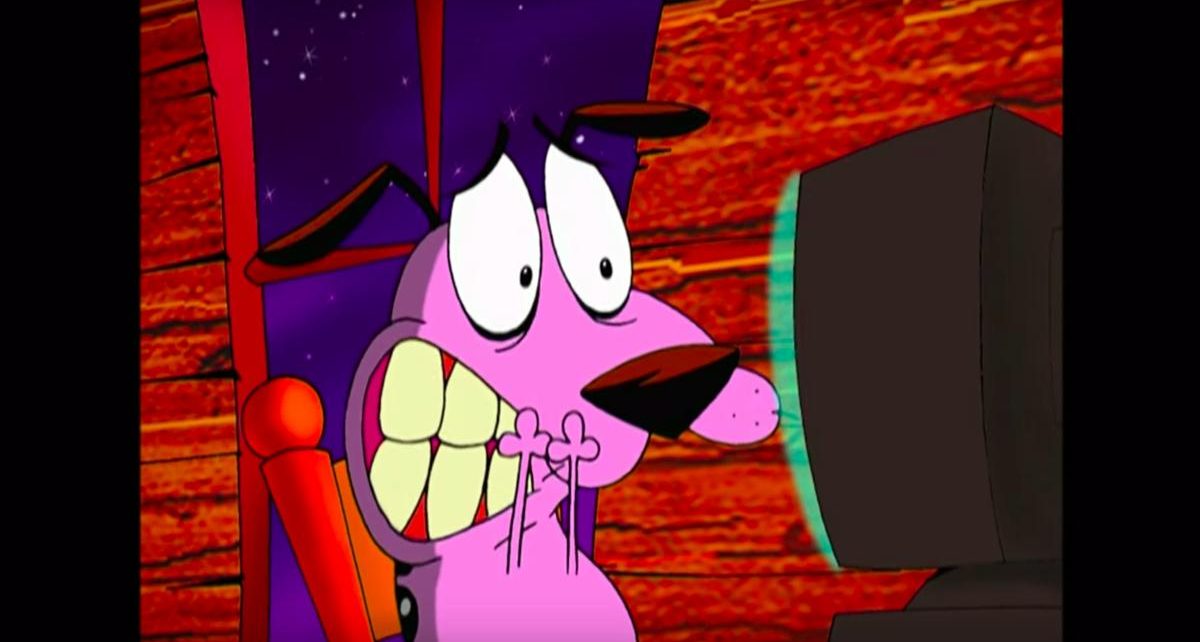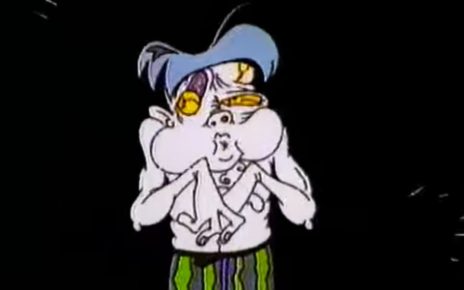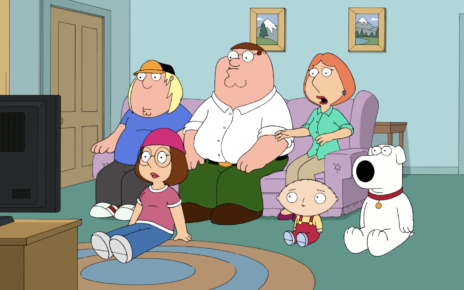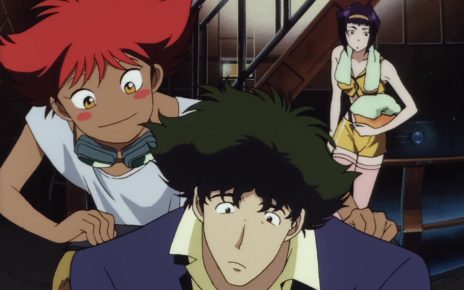I have a confession to make. Longtime readers already know how I feel about live action (just animate it, you cowards), but what they don’t know is this: When it comes to horror, I’m a widdle baby scaredy-cat.
It’s true. I have watched approximately five (5) horror movies in my life: Psycho, The Birds, Alien, Jaws (does this even count?), and The Witch, plus technically Dark Water in theaters in 2005 with friends who have spines, but I don’t actually remember if it was Dark Water, because I spent the whole of the film burying my face into my friend’s shoulder. At my 10th birthday party, I shrieked and ran away at the scarab scene from The Mummy, and all my guests pointed and laughed at me. How I love Twin Peaks as much as I do is a total mystery to me. In terrifying situations in real life, I can keep my cool: I have successfully escaped a bear more than once! But when it comes to cinematic or televised scariness, I’m an enormous wuss.
Which is why I can hardly believe that I am here, in the Year of Our Scare 2019, to say this unto you: I miss Courage the Cowardly Dog.
OK, so maybe I just identified with the cowardly part. But this show was really the only major work of horror I ingested as a child, and I loved it. No show came close to matching its balance of atmospheric dread and absurdist, existential dark humor. Despite my general aversion to art that strikes fear in me, I saw something in that series that I rarely saw elsewhere: a willingness to show children terrors of the world around us, and that we’re not alone in finding them terrifying. It wrapped this knowledge in humor, and in the safety of knowing that Courage would always live through the day and be back for another week. But it never averted its gaze from the horrifying.
Children’s horror has mostly dropped off the map these days—there’s a Coraline here and a Scary Stories to Tell in the Dark there, but you just don’t get as much of the genre aimed at kids these days as you did in the ’90s. (Which is especially a shame, since adult cinema is having something of a horror renaissance right now!) Artist Zane Whitener notes this in a terrific video essay from last year, “How Horror for Kids Dominated in the 90s,” and he makes a particularly trenchant point when discussing Courage:
“Courage the Cowardly Dog episodes almost always used allegory and metaphor as a way to explain complex issues to children that otherwise would have been difficult to talk about … Courage taught lessons that there are some people who would want to hurt you for no reason, but it also said that those things could be overcome. And the episode always ended with Courage resting in Muriel’s lap.
I don’t think horror is there, in its truest form, to say that there is no hope, that there is no reason for anything, that there is something broken inside of you that can never possibly be fixed. That media does exist. But most horror, I think—especially children’s horror—as all good stories are, is about overcoming your adversaries and surviving. It’s about saying, in the end, that there’s something wrong, but you can overcome it. It’s about empowerment—which is a lesson I think all children should learn.”
It’s almost enough to make this paltry poltroon reconsider giving the horror genre a go (almost), or to advocate for a Courage the Cowardly Dog reboot (please don’t do this). But it is definitely enough to hammer home a lesson I now realize I actually did take away from Courage the Cowardly Dog in spite of my own lily-livered nature.
Like so many cartoons for children are, Courage the Cowardly Dog was, in the end, a show about trauma and recovery. Each episode’s villain, whether it was the sadistic and smooth-talking anthropomorphic red cat Katz or a giant cockroach named ‘Shwick (not Bushwick—just ‘Shwick) or the cursed mummy king Ramses or the Queen of the Black Puddle, traumatized the crap out of Courage. But in the end, in spite of daily terrors and the malevolent inevitability of the presence of one of the worst people in animation under Courage’s roof, the fearful pup always had Muriel’s lap to which to return.
Humans in the real world are much more likely to be traumatized by catcalling or bicycle accidents than spirits of the harvest moon, but the show still reminds us of the endless ways we are traumatized in our daily lives. Courage provides an important lesson, even 20 years later: Braving horrifying situations in spite of our terror is a necessary part of living, and in the end, the people we love and who love us are those who see us through.
Now go watch it with some kids. OOGA BOOGA BOOGA!
Thanks for reading The Dot and Line, where we talk about animation of all kinds. Don’t forget to follow us on Twitter and sign up for our newsletter.





